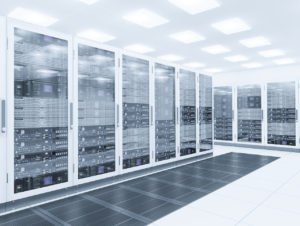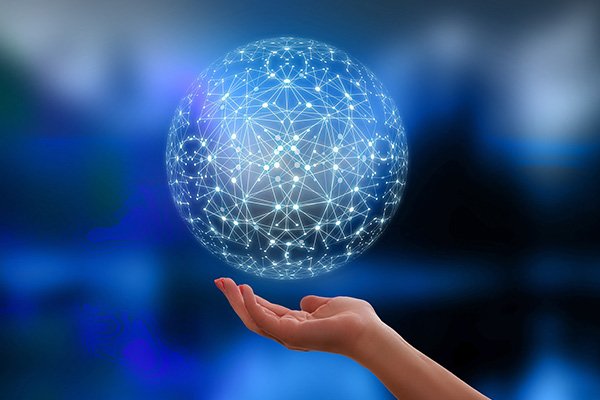Send an email, watch your social networks or watch streaming videos… all these acts of our daily life have a beautiful and good impact on our planet.
Since the Covid-19 pandemic,the acceleration of digitalization has never been greater. Telework, dematerialization of documents and sending emails in large numbers … our new habits are not without consequences on the environment.
Why and how to limit them? That’s what we’re going to explain.
Understanding digital pollution
Digital pollution refers to all forms of pollution generated by new technologies: greenhouse gas emissions, chemical pollution, biodiversity erosion, and the production of electronic waste.
All activities that revolve around digital technology require energy resources. We are consuming more and more digitally:
- Hardware manufacturing: about 35% of total digital energy expenditure
- Energy for their daily use: about 30%
- How our networks work: 20%
- Resources to power servers: 15% of energy.
Among the everyday actions, those that have the most impact are:
- Watch videos:80% of web data is linked to videos.
- Browsing social networks:more than 5% of the world’s traffic is linked to our use of social networks. To give you an example, Facebook at the end of 2020 had 2.8 billion active users worldwide. If we have to put a figure on the energy expenditure related to this site it would be 645,000 flights from Paris to New York!!
- E-mails:on average, an email travels digitally 15,000km to arrive in your correspondent’s box. The more attachments it is loaded, the larger the carbon footprint. Every day, 293 billion emails are sent, we let you do the math! (75% of emails are spam and will not be open).
- Search engines:1 1-minute internet search from a fixed computer consumes 100 watts. At Google alone, 3.3 billion searches are done every day. 1 year of internet research – 1 year of electricity consumption for a country like Norway.
Digital accounts for 4% of the world’s greenhouse gas emissions. This equates to 1.5X more than air travel.
7 to 10% of the world’s electricity would be consumed by the Internet.
With a lifespan of just over 2 years, our mobile phones have almost become disposable. It’s annoying, because makinga smartphone accounts for 80% of its environmental footprint. Indeed, this small device is a big consumer of non-renewable natural resources…
And there are many examples like these in our daily lives.

The environmental impact of data centres
To date: 4% of the world’s electricity consumption is used by data centres.
1 data center – electricity consumption of 30,000 European inhabitants
But the good news is that steps are being taken to reduce this ecological impact:
- Feeding data centers with renewable energy
- Locate them as much as possible in the Nordic countries. The fresh air on site naturally cools the servers that produce bcp heat. In this case, there is no need to use air conditioning, which will save more than 40% of their electricity consumption.
- Reuse the heat emitted by redirecting airflows or water circuits, and then be able to heat buildings.

Recycling computer devices
All computer and gaming equipment can be recycled. From the computer screen to the mouse to the printer, keyboard, tablet, center unit, games console, speakers and all other accessories and connectivity.
Europe has the highest collection and recycling rate,accounting for about 42.5% of total e-waste generated in 2019.
The most incredible thing is that e-waste contains precious metals and useful raw materials such as gold, silver, copper and platinum. The total value of all these components was estimated for 2019 (approximately) at $57 billion. This is more than the GDP of most countries.
The change has begun in terms of recycling. By the end of 2019, 78 countries covering 71% of the world’s population had or were in the process of implementing a waste management policy.

Be aware of the cost of our clicks
At home and in the office, digital tools are one of the main sources of electricity consumption. So you have to think about turning them off when you’re not using them anymore. In addition, on some equipment, you can also select the “energy saving” option.
Several web giants, which are among the biggest consumers of energy in the digital sector,are now turning to green and eco-responsible energy.
There has also been progress within companies: reduced paper printing, internal communication to avoid emails, the creation of eco-friendly websites, the rental of computer equipment, etc.
So because the internet is a great means of exchange and an inexhaustible source of information: let’s take care to adapt our consumption to make this indispensable tool of our daily life, more respectful of the environment.
Let’s watch our videos in low resolution, reduce the quality of photos shared on social networks, regularly clean up our useless information stored in the cloud or erase our emails sent … these are some of the small steps that reduce the ecological impact of digital technology.
Namely: 4G consumes 5 to 25 times more than Wi-Fi. Consider cutting off our mobile network as soon as it is possible to switch to Wi-Fi.
The figures above vary according to the studies, some are regularly questioned or are impossible to verify.
The positive impact of digital
In Europe, an office worker consumes an average of 2,500 sheets of paper per year. The massive use of this paper as well as ink for printing have very negative effects on the environment. The benefits of digital on this point are undeniable …
Digital technology has a significant impact on our planet’s resources, but a good use of digital technology would allow us to counterbalance this impact in many areas.
The dematerialization of documents in business: a gesture that remains ecological. 1/5 of greenhouse gas emissions are thought to be due to the destruction of our forests.
It is good to know that the digital bill would be less damaging overall if it is never printed and if its online consultation lasts less than thirty minutes.
In early 2020, Microsoft announced that it wants to be carbon negative by 2030 through a foundation funded by an internal tax. Energy gains from chips, more efficient cooling of data centers: the sector innovates to contain its impact.
In an attempt to combat digital pollution,a discipline emerged in the early 2000s: sustainable computing.
“It seeks to minimize the impact of IT on the environment,” explains Romain Willmann, a lecturer for EMLYON Business School.
By launching a laptop with a bamboo-based shell, Asus didn’t just pull off a marketing stunt. This idea allowed the manufacturer to reduce the volume of plastics needed for its design by 20%.
In the same spirit, Sony is currently testing a computer with the general public whose shell is made from recycled plastic from CDs and DVDs.
Let’s not forget that digital technology also enables the design of systems that improve the management of energy, resources and transport.

Making digital greener
Did you think you were well informed about what’s polluting around you? Many people have not yet become aware of theimpact of their digital consumption on the world.
Yes digital is the future, and no we will not be able to do without it. So let’s take these responsible actions in our lives to limit digital consumption.
As seen above, digital technology is responsible for 4% of greenhouse gas emissions and could reach a rate of 8% by 2025. However, it must be noted that it also fulfils an indispensable role, as was shown during the containment in the face of the Covid-19 pandemic.
Let us remember that if we make a collective effort to move towards eco-responsible digital practices, we could transform digital technology into an ally of choice in our fight against global warming.

